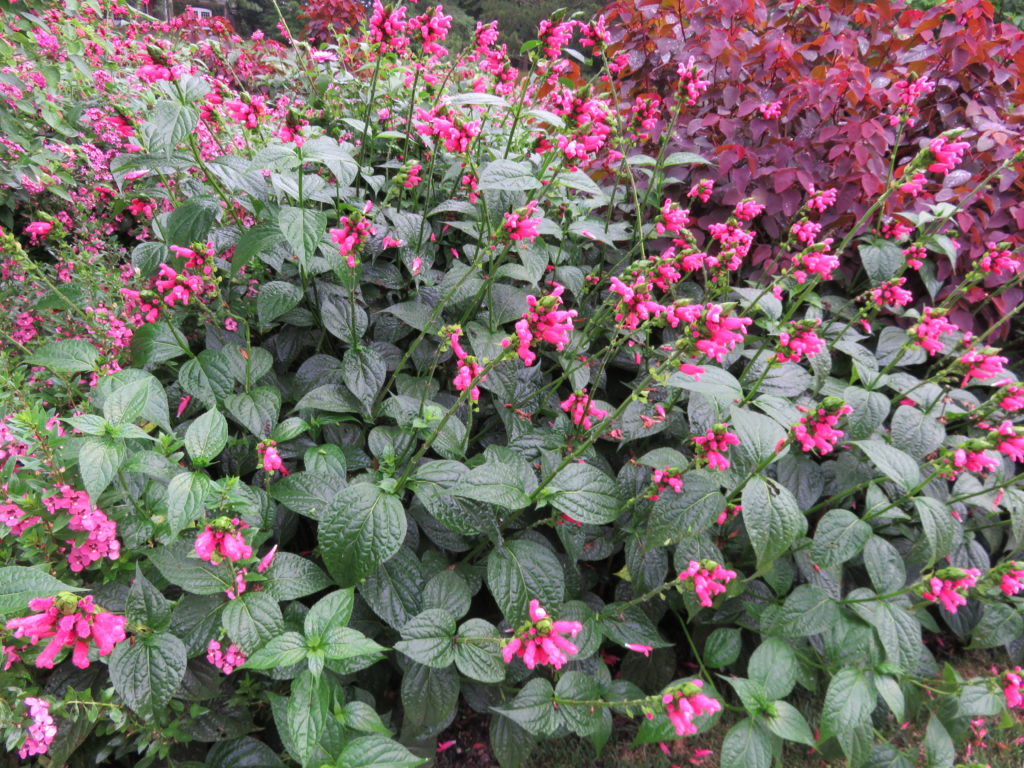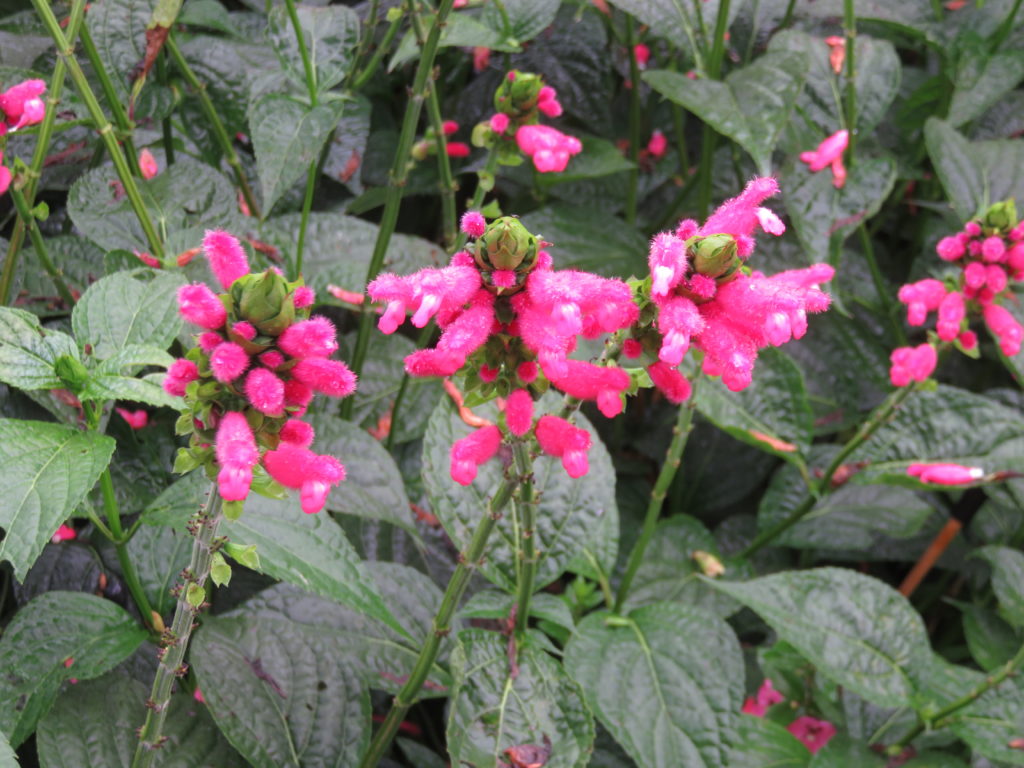The large and bright fuzzy blossoms of Bolivian Spearhead Sage (Salvia oxyphora), aka Fuzzy Bolivian Sage, should catch your eye in late summer and early autumn. Equally attractive is the plant’s lush tropical-like glossy green foliage.

This sage inhabits the edges of moist forests in the foothills of the Andes. It is grown as an annual in full sun in Northern climes during the summer. If grown in containers, you may opt to bring plant(s) indoors over the winter. It prefers midday shade in the hot summer climes in the southern U.S.
This vigorous growing salvia can reach 4 feet high by summer’s end along with deep green tropical-like foliage. Numerous velvety hairs, almost invisible, cover the foliage. Fuzzy deep pink tubular flowers emerge from short dense spikes atop the verdant foliage starting in late-spring.

Fuzzy Bolivian sage prefers a well-drained, rich loamy, mildly acidic pH soil, and in full to partial sun. Cut back stems once in late spring to develop better branched plants. If sown from seeds, start them indoors 6-8 weeks before last spring frost date. Plants are not commonly available for purchase at U.S. garden centers. Fertilize plants at planting time and once again in mid-summer.
Salvias are rarely troubled by very few serious disease and insect pests. Plants may be susceptible to downy and powdery mildew if the planting is crowded or poorly sunlit.
Salvia’s attractive tubular flowers are valued by hummingbirds, bees and butterflies for their pollen and nectar. If salvias appear tired in late summer, shear the plants lightly, including the removal of the spent flowering spikes in order to encourage new growth and flowering.
In the northern portions of its hardiness range (Zone 8), cover crowns (plant bases) with a loose (non-packing) winter mulch such as pine straw.

 Posted in
Posted in 
